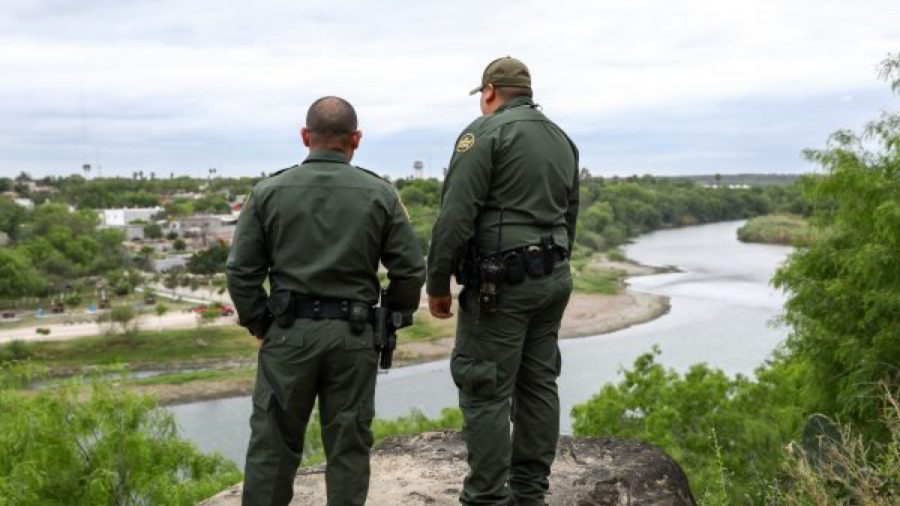MATAMOROS, Mexico—The young migrant family from El Salvador appeared in this border city over the weekend with fear already on their faces.
They went to the downtown bridge that leads to Brownsville, Texas, where Xiomara Mejia, herself also a migrant from Central America, explained that the newcomers would not be able to add their names to the long list of families waiting to apply for asylum in the United States until Monday.
“I noticed they were really nervous, scared,” she said. “They had panic on their faces.”
“They said to me, ‘You haven’t tried to cross the river?’” Mejia said. “We said to them, ‘No,’ because of the children more than anything. I don’t know how to swim and my kids do, but either way I’m not going to risk it.”

Mejia had arrived in Matamoros from Honduras with her husband and three children on May 8. They said Wednesday that there were only two families still in line ahead of them to file their asylum applications with the U.S. government. They started out in March from San Pedro Sula, the second largest city in crime-plagued Honduras.
After chatting, the Salvadoran family said they would come back Monday, Mejia said.
“I didn’t think they were going to decide to cross the river,” she said Wednesday.
On Sunday, not far downriver from that bridge, the family crossed a popular bike and jogging path and walked down a slope through the brush to the Rio Grande’s edge. Not far upriver there had been soccer games on fields beside the river and even an outdoor yoga class.
The river does not appear wide there, maybe 20 to 30 yards, but vegetation carried by the current passes swiftly.
Óscar Alberto Martínez Ramírez, 25, and his 23-month-old daughter, Valeria, were swept away. Their bodies were recovered Monday morning, lying face down by the river bank a few hundred yards downstream.
Martínez’s 21-year-old wife, Tania Vanessa Ávalos, was expected to accompany the bodies of her husband and daughter back to El Salvador on Thursday.
Martínez had shared a sea-green brick home with barred windows in San Martin on the outskirts of the capital, San Salvador, with his mother, his wife, and their daughter.
In their working-class neighborhood of about 40,000 people, Martínez worked in a pizzeria and Ávalos was a cashier in a fast-food restaurant, said his mother, Rosa Ramírez.

The area has had problems with gang violence, but these days it’s calm, she said. She said her son never had any problems with gangs, and he left with his family for economic reasons.
Ramírez said she had given them the big room in the two-bedroom house, but they dreamed of saving money for a place of their own and the dream drove the family to head for the United States in early April.
“I told him, ‘Son, don’t go. But if you do go, leave me the girl,’” Ramírez said.
″‘No, mama,’” she said he replied. ”‘How can you think that I would leave her?’”
Now she feels a hole that “nobody can fill, but God gives me strength.”
The region along the U.S.-Mexico border has long been perilous for those trying to cross illegally into the United States between ports of entry, from the fast-moving Rio Grande to the scalding Sonoran Desert. A total of 283 people died while trying to cross last year; figures for 2019 have not yet been released.

On Sunday, Martínez decided to make that journey, swimming with Valeria from Matamoros to the Texas side of the Rio Grande, where he left her on the riverbank and started back to get his wife. Seeing him leave, the girl threw herself into the water. Martínez returned to get her, but both were swept away. Ávalos was not harmed.
Tamaulipas immigration official Enrique Maciel said Wednesday that Ávalos was “in a total shock” and would not be speaking to reporters. Covered in white sheets, the two bodies were placed into a morgue van to be driven to a funeral home.
“She is afflicted. She is suffering. It is a dream they had to get ahead as a family, the three of them, and she returns in mourning with only the bodies of her family,” Maciel said.
News of the drownings, and the shocking photo, resonated in El Salvador among those considering heading north as part of what has been a surge of people from that country, Guatemala, and Honduras fleeing poverty and violence.

In a Salvadoran chat group for people thinking about forming a migrant caravan—a phenomenon that drew the ire of President Donald Trump last year but has all but vanished since Mexican authorities started cracking down—participants engaged in a raw discussion of the perils of the journey and whether it’s right for parents to take children along.
“If one goes there, they shouldn’t bring children, because going there is risking everything and a child is not prepared for that,” one message said. It said young ones should be left with relatives back home.
Someone replied, “The thing is, it’s more likely that they give you help with children.”
“But that’s only if they manage to arrive there,” came the response. ”… and that help should come when they are on the road. … But no, on the road there is no help for any child and there is where it’s most needed.”
At the downtown bridge Wednesday, Mejia was sure she made the right decision to endure the long wait to make her asylum bid, even though she had seen other families grow desperate with the wait.
She has a daughter with a brain tumor who needs surgery, but they have some relatives in Matamoros who they have been able to stay with, she said.
“We don’t want to cross (through the river), we want to enter through legal channels to the United States and make the case,” Mejia said.
By Marcos Alemán and Christopher Sherman

